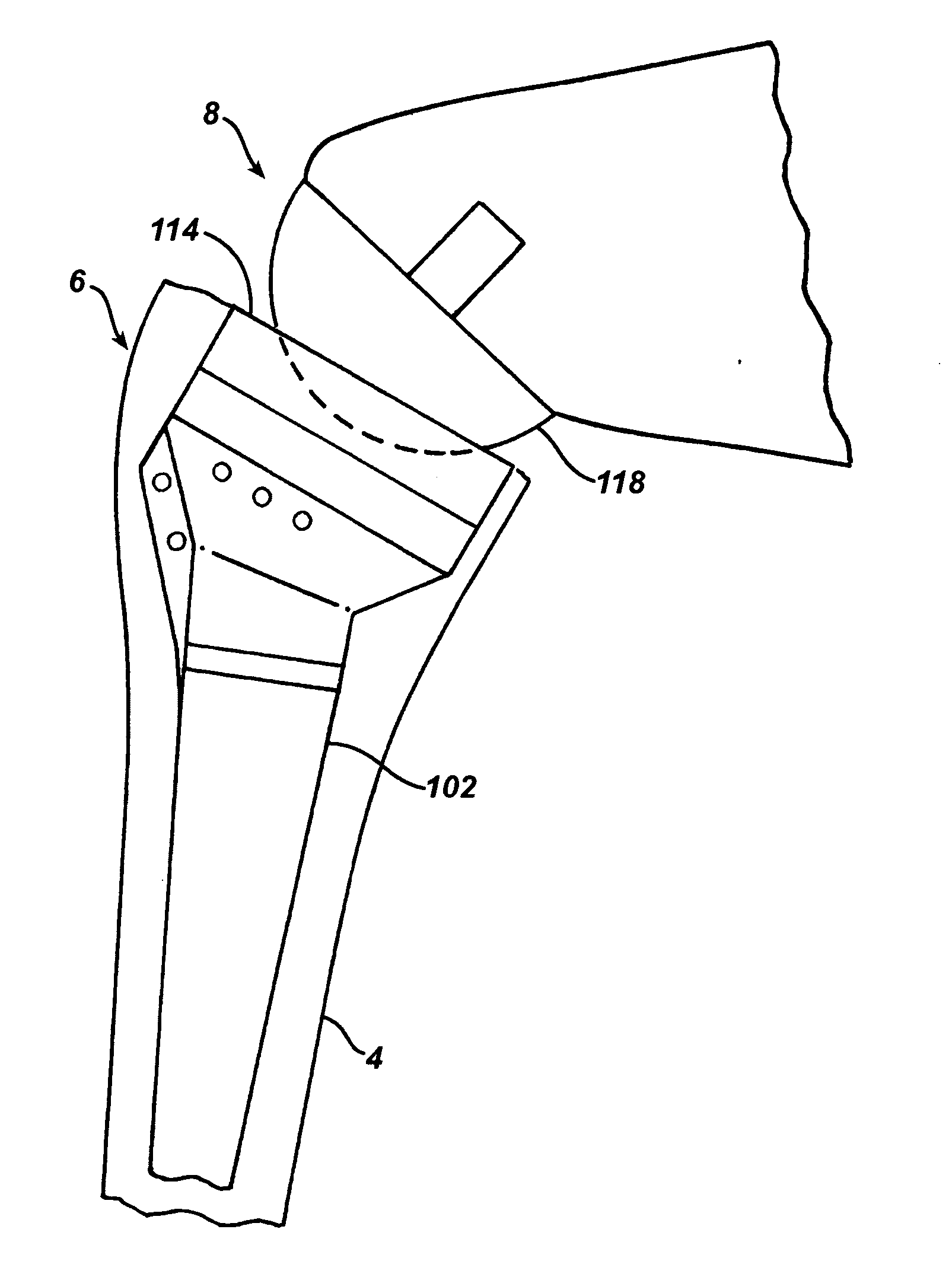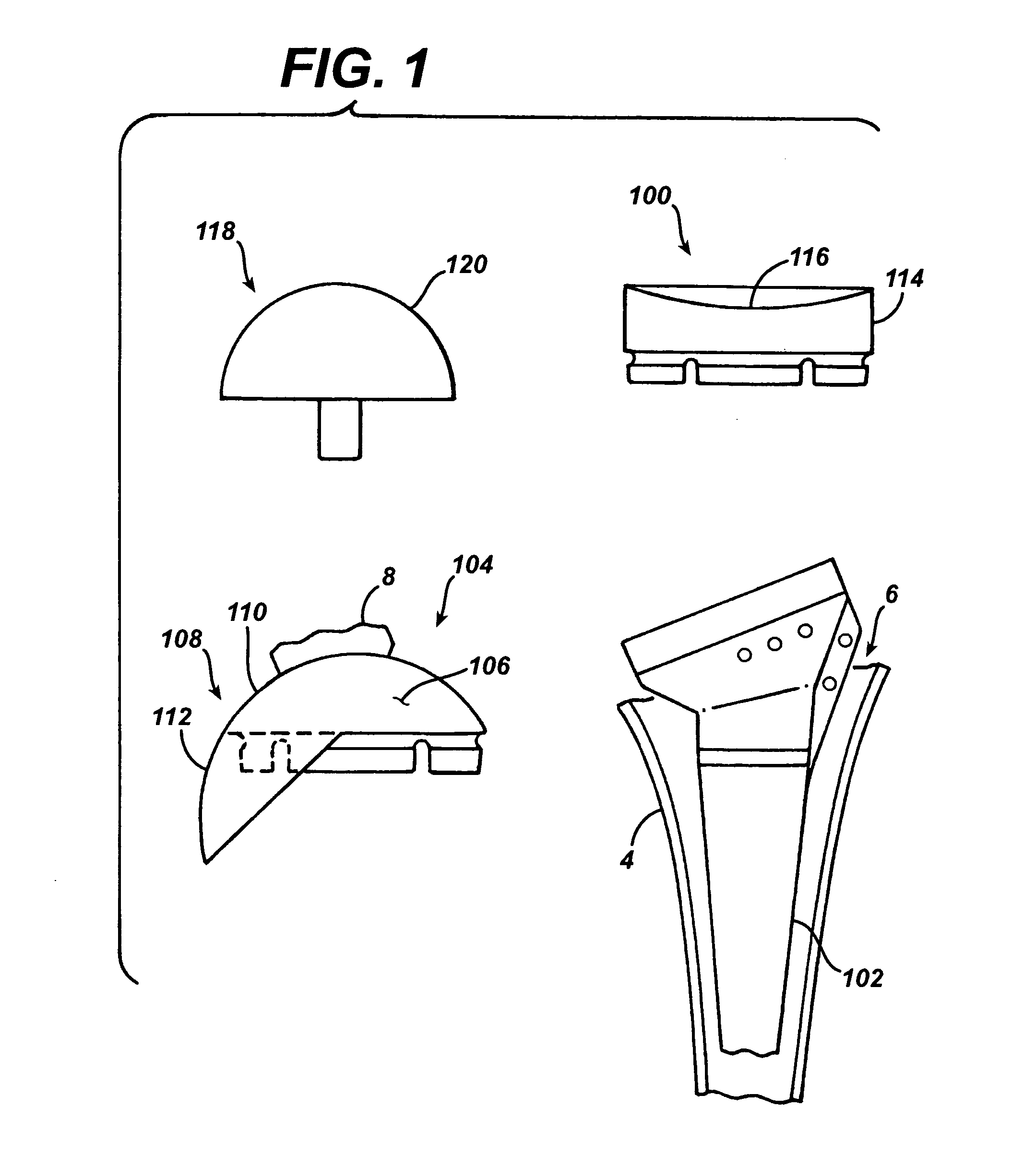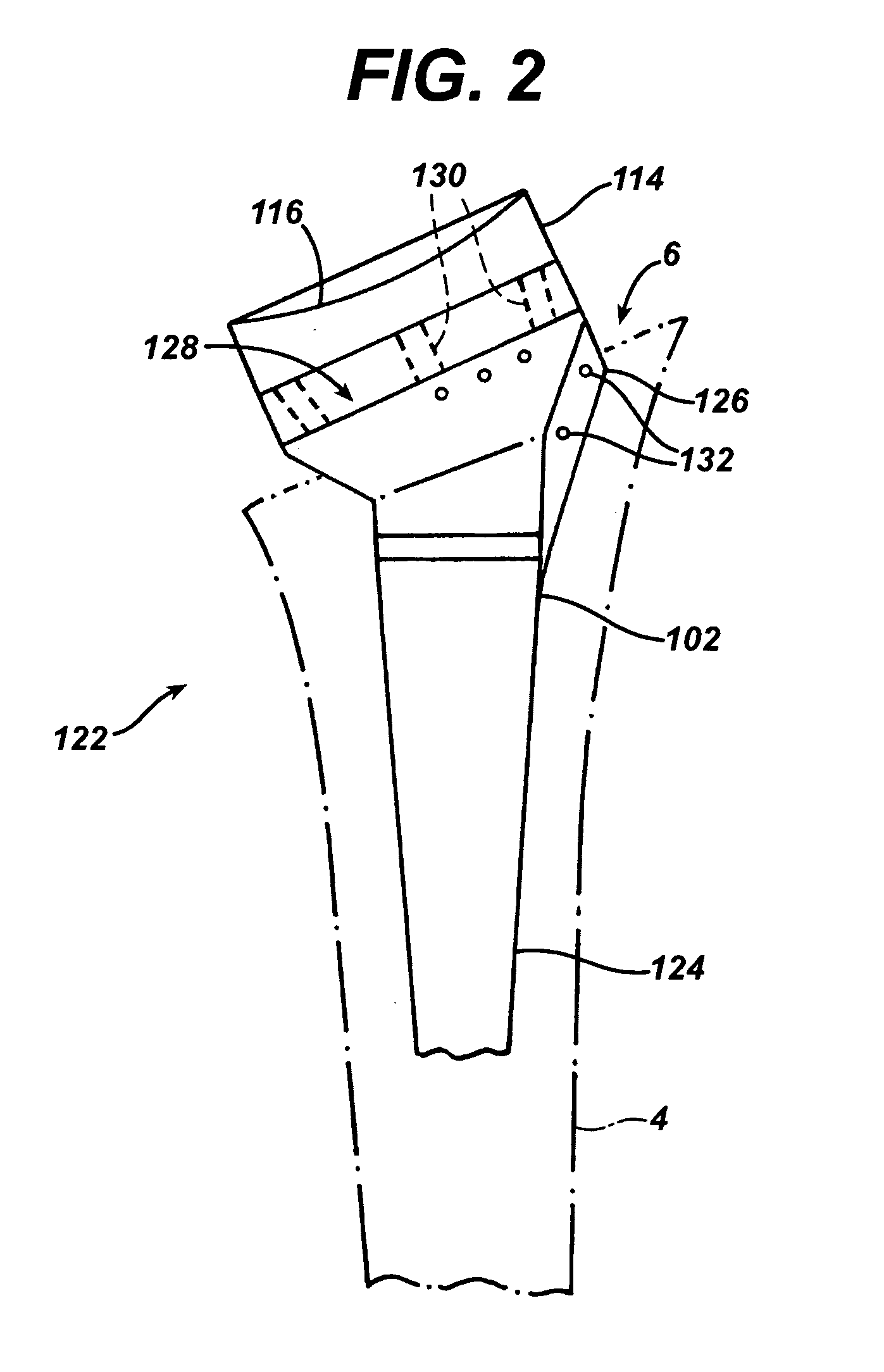Extended articulation prosthesis adaptor and associated method
a technology of extension articulation and adaptor, which is applied in the field of orthopaedics, can solve the problems of deterioration of the patient's rotator cuff, accelerating humeral articular destruction and acromion erosion, and significantly restricting the patient's range of motion
- Summary
- Abstract
- Description
- Claims
- Application Information
AI Technical Summary
Benefits of technology
Problems solved by technology
Method used
Image
Examples
Embodiment Construction
[0068] Embodiments of the present invention and the advantages thereof are best understood by referring to the following descriptions and drawings, wherein like numerals are used for like and corresponding parts of the drawings.
[0069] According to the present invention and referring now to FIG. 1, a shoulder athroplasty kit is shown for providing shoulder athroplasty. The kit 100 includes a stem 102 for insertion into the humerus 4. The stem 102 may have any suitable size and shape to be adapted for cooperation with the humeral canal 6 of humerus 4. The stem 102 may be made of any suitable, durable material and may, for example, be made of a metal. If made of a metal, the stem 102 may be made of, for example, a cobalt chromium alloy, a stainless steel alloy, or a titanium alloy.
[0070] The kit 100 further includes a first member 104. The first member 104 includes a surface 106 having a convex periphery. The surface 106 is adapted for articulation the glenoid fossa 8. The convex per...
PUM
 Login to View More
Login to View More Abstract
Description
Claims
Application Information
 Login to View More
Login to View More - R&D
- Intellectual Property
- Life Sciences
- Materials
- Tech Scout
- Unparalleled Data Quality
- Higher Quality Content
- 60% Fewer Hallucinations
Browse by: Latest US Patents, China's latest patents, Technical Efficacy Thesaurus, Application Domain, Technology Topic, Popular Technical Reports.
© 2025 PatSnap. All rights reserved.Legal|Privacy policy|Modern Slavery Act Transparency Statement|Sitemap|About US| Contact US: help@patsnap.com



